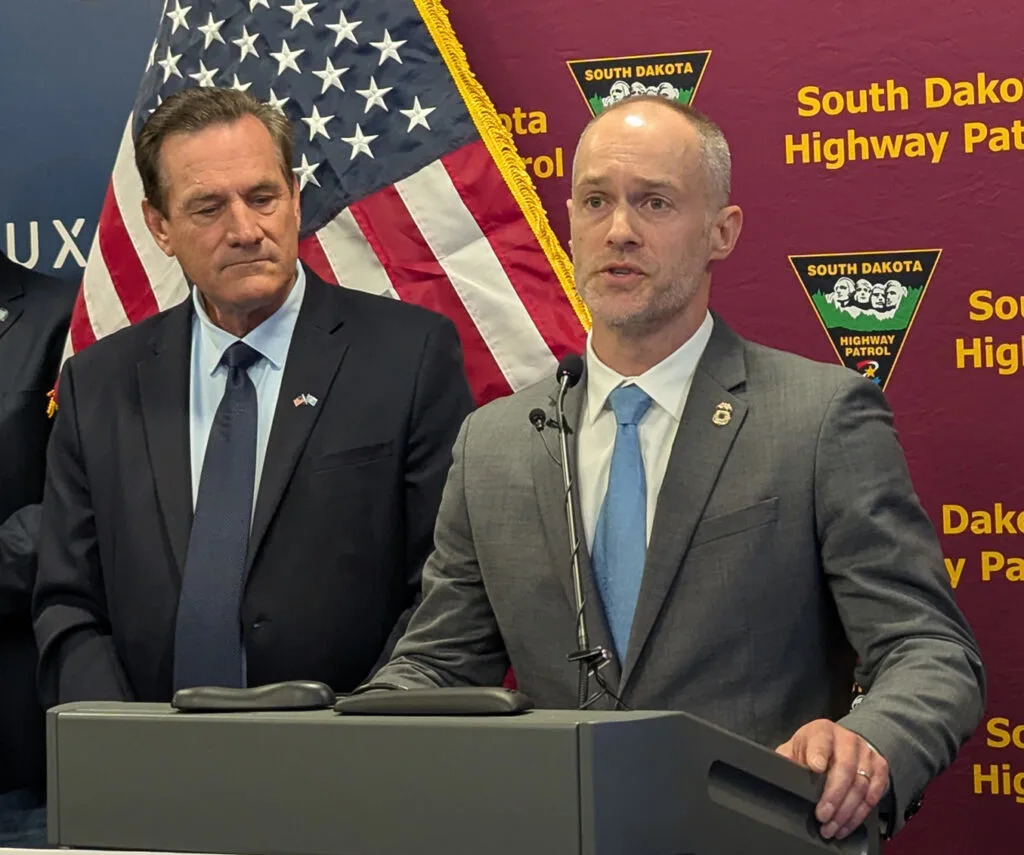
Sam Olson, Minneapolis field office director for U.S. Immigration and Customs Enforcement, speaks on July 28, 2025, at the Public Safety Administration Building in Sioux Falls. Standing near him is Gov. Larry Rhoden. (John Hult/South Dakota Searchlight)
National Guard troops on both sides of South Dakota are now processing paperwork for U.S. Immigration and Customs Enforcement.
Republican Gov. Larry Rhoden announced Monday that three guard members in Sioux Falls and three in Rapid City have begun to document and process ICE arrest information, which Rhoden said will let immigration agents stay in the field in search of migrants eligible for deportation.
The National Guard also assigned a liaison to serve as the communication point between ICE and the six people working on immigration paperwork.
The news is part of a flurry of immigration enforcement activity in South Dakota since the inauguration of President Donald Trump. Rhoden ascended to the state’s chief executive post following the departure of his predecessor, Kristi Noem, to serve as secretary of the U.S. Department of Homeland Security, the federal agency under which ICE operates.
The National Guard’s ICE assistance is part of a broader, branded effort from Rhoden dubbed “Operation Prairie Thunder.”
Last week, Rhoden’s administration announced that the Board of Pardons and Paroles had granted early release to 10 men from various countries who lacked legal status and were in line for federal deportation proceedings upon their release from state custody.
South Dakota Democrats have bristled at the enforcement push, and have said Rhoden’s immigration efforts are “politicized.”
Correctional actions
On Monday, as part of his press release on the National Guard, Rhoden said the DOC had finalized its cooperation agreement with ICE, known as a 287(g) agreement. According to the agreement and ICE’s 287(g) website, the agreement was finalized on July 27.
Rhoden’s office did not immediately respond to a question on why the announcement came three weeks after the agreement was finalized.
Such agreements allow local agencies to work with ICE through one of three cooperation models. The DOC’s agreement was signed under the Jail Enforcement Model, which trains state-level officers to identify people without documentation of legal status and turn them over to ICE for removal.
The 10 inmates paroled last week were not identified by state correctional officers trained to work with ICE. They already had “ICE holds,” which is a term used in corrections to note which inmates are expected to move into ICE custody upon their release from state or local custody.
The DOC has yet to identify how many employees will be trained to work with ICE on investigating the status of inmates not already identified as in line for deportation, DOC spokesman Michael Winder said in an email on Monday.
Rhoden previously signed a letter of intent to signal the prison system’s plans to commit to an ICE agreement earlier this summer, while announcing Operation Prairie Thunder.
He also said at the time that ICE-trained state troopers would carry out limited immigration actions through the Highway Patrol’s 287(g) agreement. The agency finalized its Task Force Model agreement on May 22, according to the ICE website. That model essentially deputizes local law enforcement to work with ICE.
Broader efforts
In his press release, Rhoden characterized the latest developments with the DOC and the National Guard as efforts to “to keep South Dakota strong, safe, and free.”
There are now five state agencies with active 287(g) agreements.
The state Division of Criminal Investigation is using the Task Force Model. Attorney General Marty Jackley, who leads that agency, has said his detectives will target undocumented people who’ve committed acts of violence.
Two local jails have agreements under the 287(g) Warrant Service Model. Under those agreements, staff at the Hughes and Minnehaha county jails can serve ICE warrants on people in custody, which saves ICE agents from appearing personally at the jail to do so.
All five of the agreements in South Dakota were finalized this year, after Trump signed an executive order to encourage more state and local agencies to sign 287(g) agreements.
SUBSCRIBE: GET THE MORNING HEADLINES DELIVERED TO YOUR INBOX

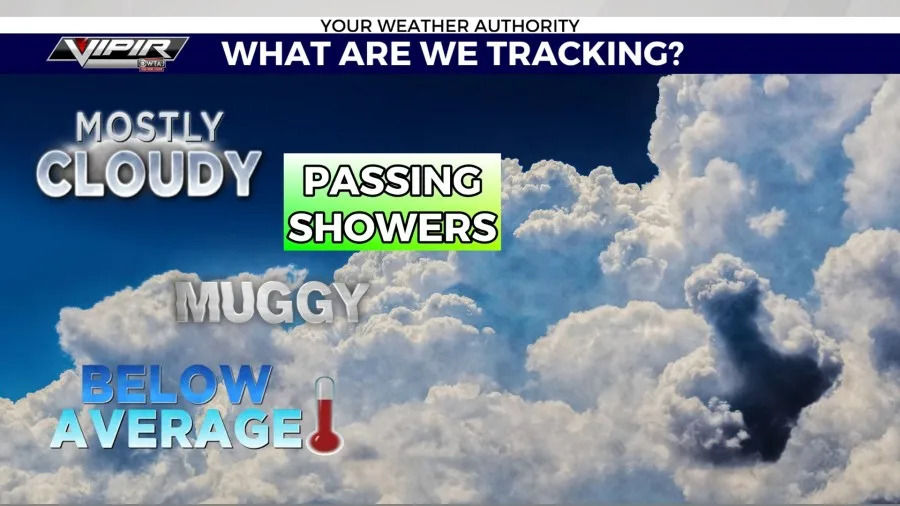
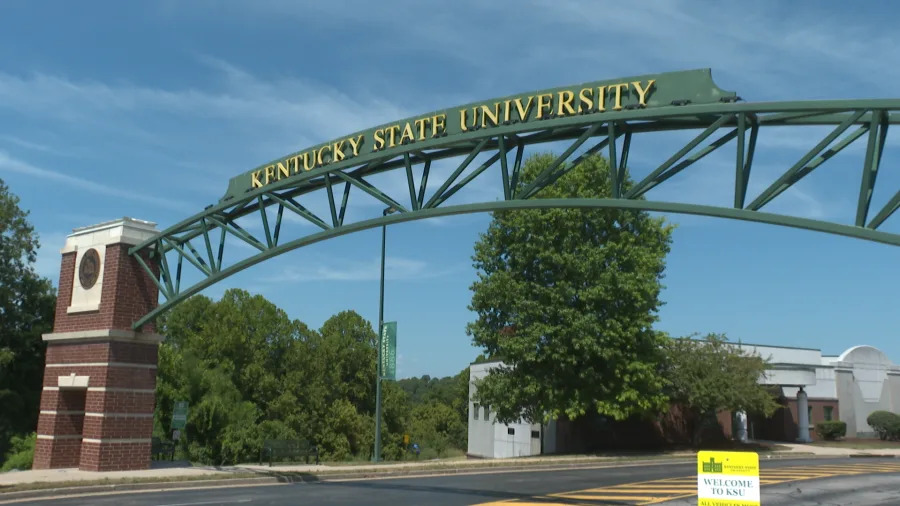


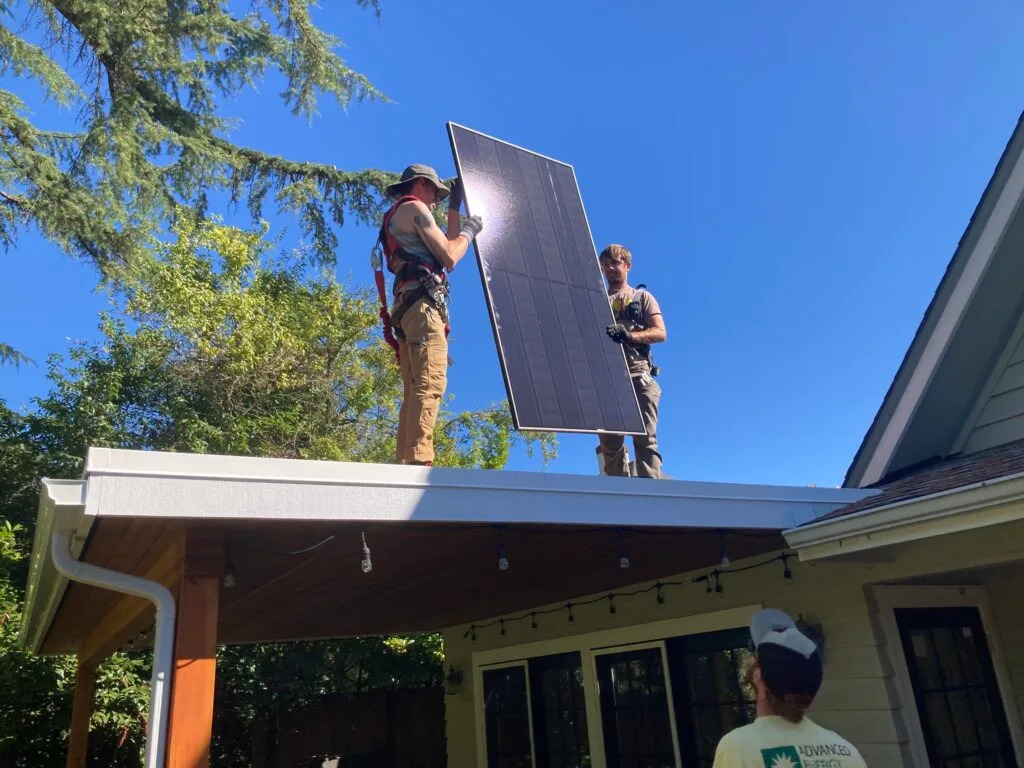
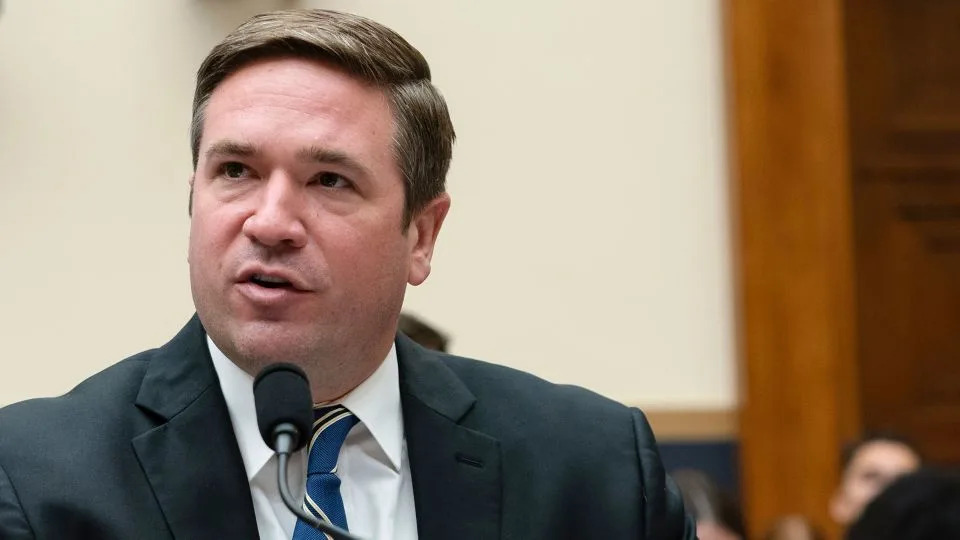
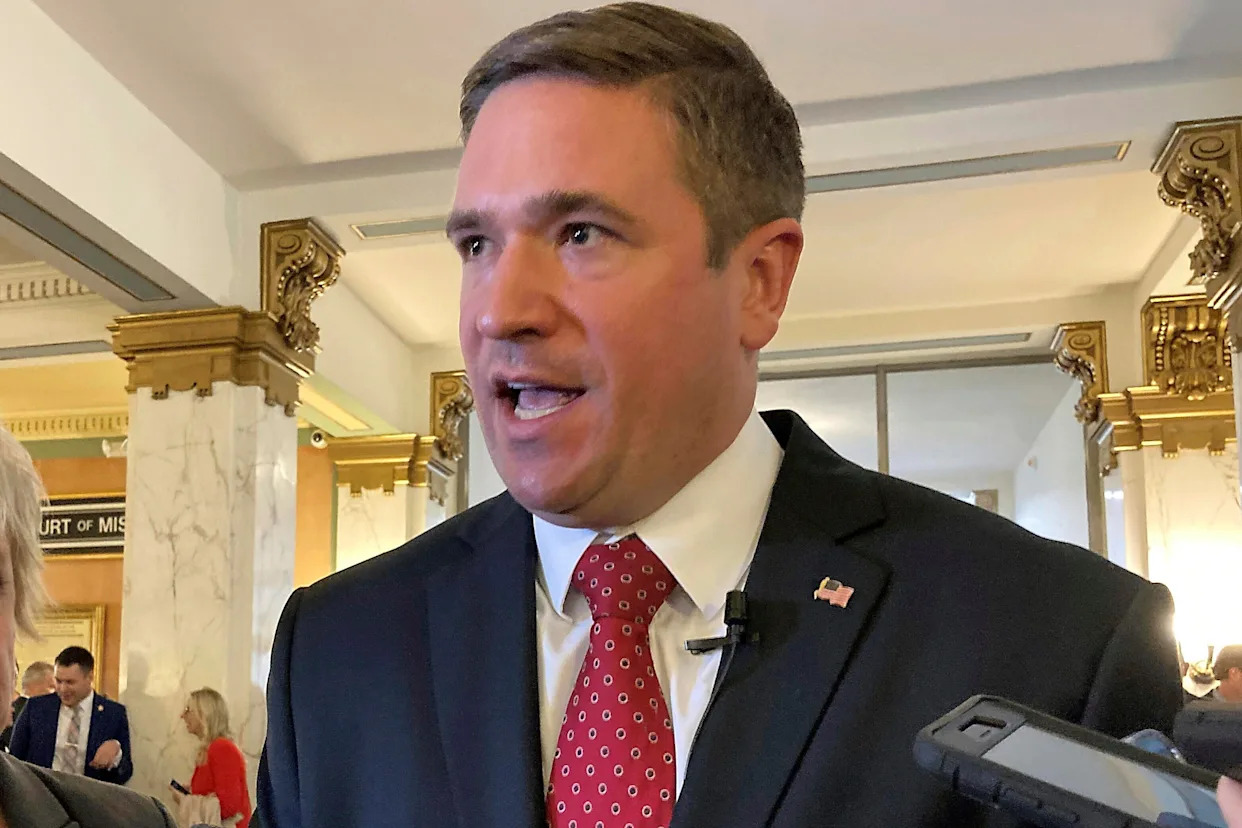
Comments